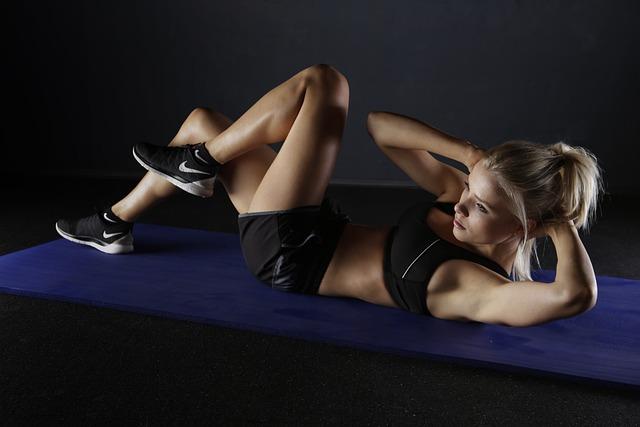In the ever-evolving world of fitness, one question persistently lingers: do women truly require different workouts than men? As we delve into this intriguing query, we find ourselves navigating a landscape where biology, culture, and personal goals intersect. While the gym may seem like a great equalizer, it’s essential to explore whether gender-specific approaches are more beneficial or simply a myth perpetuated by stereotypes. In this article, we’ll unravel the science behind gender differences in exercise, examine the influence of societal norms, and ultimately seek to understand if tailoring workouts by gender is a necessity or merely a fitness fad. Join us as we embark on this journey to uncover the truth about gender and exercise.
Understanding Gender Differences in Physiology
The intricate dance of hormones, muscle composition, and metabolic rates all contribute to the physiological differences between men and women. Hormonal variations, such as the presence of estrogen and testosterone, significantly influence muscle growth and fat distribution. Women, due to higher levels of estrogen, often have a higher percentage of body fat and may find it more challenging to build muscle mass compared to men. This does not imply a need for entirely different workouts but rather adjustments in training focus and intensity.
Key physiological differences to consider when designing workout routines include:
- Muscle Recovery: Women generally experience faster recovery times, which can affect the frequency and intensity of workouts.
- Joint Structure: Women’s joints are often more flexible, which can influence the type of strength training exercises recommended.
- Endurance Levels: Research suggests women might have an edge in endurance activities, potentially requiring different cardio strategies.
Understanding these differences can help in tailoring workouts that optimize health benefits while respecting individual body responses.

Tailoring Workouts to Female Biomechanics
Women often exhibit unique biomechanical characteristics that can influence their exercise performance and injury risk. Understanding these differences can be pivotal in crafting workouts that are both effective and safe. Joint laxity, pelvic structure, and hormonal fluctuations are some of the factors that can vary significantly from men, affecting everything from flexibility to strength. For instance, a wider pelvis can alter gait and running mechanics, necessitating exercises that stabilize the hips and knees.
Additionally, the hormonal cycle can impact energy levels and muscle recovery. Designing programs that are mindful of these variations might include:
- Emphasizing core stability to support the lower back and pelvis.
- Incorporating joint-friendly exercises to accommodate greater laxity.
- Adapting intensity and volume based on energy fluctuations throughout the month.
By acknowledging and adapting to these biomechanical nuances, workouts can be more aligned with women’s physical needs, promoting not just performance, but overall well-being.

Balancing Hormonal Influences in Exercise Routines
Understanding the distinct hormonal landscapes of women and men is crucial in crafting effective exercise routines. Women’s bodies are significantly influenced by hormonal fluctuations throughout the menstrual cycle, which can impact energy levels, strength, and recovery. Estrogen and progesterone play pivotal roles in these variations, affecting everything from muscle synthesis to endurance capabilities. Tailoring workouts to accommodate these fluctuations can optimize performance and enhance overall well-being.
Here are some considerations for balancing hormonal influences in workouts:
- Phase-specific Training: During the follicular phase, women might benefit from more intense strength training due to increased estrogen levels.
- Recovery Focus: In the luteal phase, incorporating more recovery and flexibility exercises can help manage energy dips.
- Adaptability: Being flexible with workout intensity and duration based on how one feels can prevent burnout and injury.
By aligning exercise routines with these hormonal shifts, both men and women can maximize their fitness outcomes while respecting their bodies’ unique rhythms.

Creating Inclusive Fitness Programs for All Genders
Designing fitness programs that cater to all genders involves recognizing both the physiological differences and the shared goals among individuals. While there are certain anatomical distinctions, such as hormonal influences and muscle distribution, the fundamentals of a balanced fitness regimen remain universally applicable. This means emphasizing a blend of strength training, cardiovascular endurance, and flexibility.
- Strength Training: Focus on compound movements like squats and deadlifts that engage multiple muscle groups.
- Cardiovascular Work: Incorporate activities such as running, cycling, or swimming to enhance heart health and stamina.
- Flexibility and Mobility: Regular stretching and yoga can improve range of motion and prevent injuries.
Ultimately, the goal is to foster an inclusive environment where everyone feels empowered to pursue their fitness journey. By emphasizing commonalities over differences, we can create a community that supports all individuals in achieving their personal health and wellness objectives.
Future Outlook
In the ever-evolving landscape of fitness, the question of whether women need different workouts than men continues to spark debate and exploration. As we’ve journeyed through the nuances of physiology, goals, and personal preferences, it’s clear that the answer is not a simple yes or no. Instead, it’s a tapestry of individual needs, scientific insights, and evolving perspectives. Ultimately, the most effective workout is one that aligns with personal goals, respects the body’s unique requirements, and inspires consistency and joy. As we close this chapter, let’s celebrate the diversity of fitness paths available and embrace the idea that the best workout is one that empowers and uplifts, regardless of gender.


































